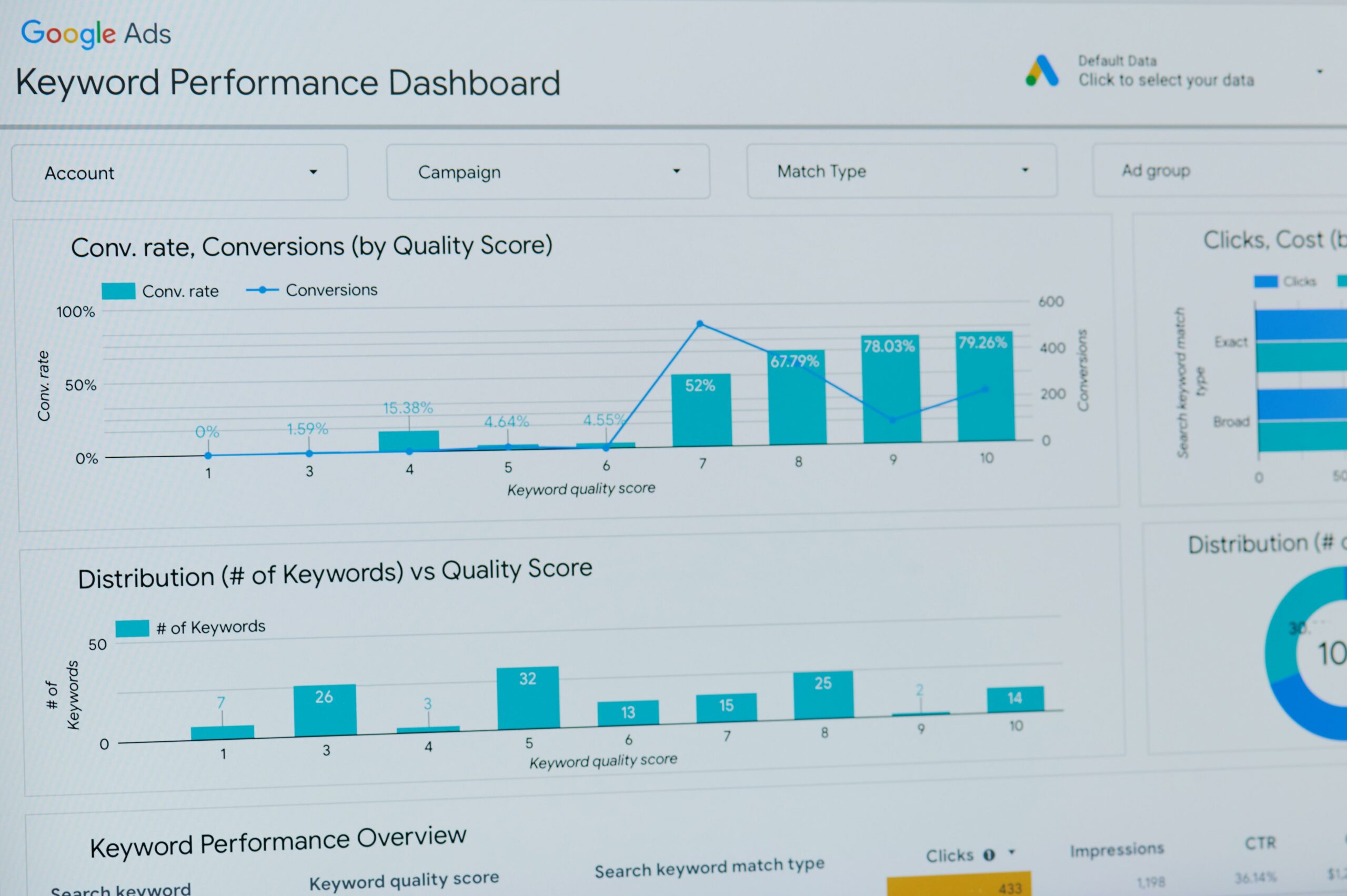How To Add SEO Keywords to A Website
-

Aaron Gray
- Blogs
-
 March 12 , 2024
March 12 , 2024
-
 10 min read
10 min read
ANSWER
- Start by using keyword research tools to identify relevant, high-potential keywords to target. Then, map those keywords to related pages optimised around each term through strategic placement in headings, title tags, meta descriptions, alt texts, etc.
- The best practice for Search Engine Optimization (SEO) is to keep keyword density around 2-3% of the total word count spread naturally throughout the copy. Going significantly above 3% risks over-optimising and stuffing content, which can negatively impact rankings.
Key Takeaways
- Conducting thorough keyword research and seamlessly incorporating strategic terms throughout the website copy is critical to driving qualified traffic through search engines. Using the right keyword research tool to identify the best keywords with volume and properly optimising pages around those terms without overstuffing content enables higher rankings. This process allows you to pull in visitors actively looking for the solutions you offer.
- Following proven strategies for keyword placement in a page title, headers, anchor text links, and surrounding copy enables higher rankings, so more searches reach your valuable web content.
Selecting the best keywords for SEO can feel overwhelming when developing your content strategy and on-page optimisation. It’s difficult to know how to effectively choose and incorporate keywords on each page to boost site rankings and website traffic. Leveraging tools like Yoast SEO plugin can make all the difference. These devices aid with researching and integrating strategic keywords seamlessly into your content.

You’ve come to the right place. This guide simplifies keyword targeting so you can efficiently optimise pages for better search rankings. You’ll learn a structured approach to keyword research, letting you pinpoint terms that draw qualified traffic. Plus, best practices for integrating primary and secondary keywords into existing pages smoothly, without over-optimising.
The goal is to provide an actionable SEO keyword framework to help you:
- Easily find relevant, high-potential keywords tailored to your business using trusted keyword research tools.
- Understand which pages to target and where to incorporate keywords for a more significant strategic impact.
- Create SEO-friendly content without overstuffing just to hit specific volumes.
- Continually refine your keyword targeting over time for consistent growth.
With the proper methodology, you can avoid wasting effort guessing which terms to focus on or struggle getting traction with search engines. Instead, you’ll have a formula primed for increasing your website traffic from organic searches in a meaningful way.
Understanding SEO Keywords
When it comes to optimising your website and content for search engine results, properly researching and integrating strategic keywords is imperative. Targeting the correct terms can lead to improved rankings, increased qualified traffic, and more significant returns from your SEO efforts over time.
Before diving into keyword research and placement for an on-page SEO strategy, it helps to understand what we mean by “keywords” in the context of SEO.
Keywords refer to the main words or phrases that users enter into search engines when looking for information or solutions online related to a specific topic. Some examples would be terms like “email marketing”, “social media strategy”, or “build backlinks”.
When you optimise your pages around specific keywords, it helps search engines better understand what your content is about—enabling you to appear higher in results for searches related to those terms. Proper keyword usage also assists visitors in determining if your page offers the information they’re seeking.
Now that we have defined SEO keywords, let’s explore some key aspects of choosing and working them into your website copy:
- Conduct keyword research using dedicated tools to identify terms that your target audience is likely searching for and have decent, but not extreme, competition levels. This tactic ensures you focus efforts on keywords capable of driving relevant organic traffic.
- Identify a primary keyword or “focus keyword” for each page that clearly defines the topic being covered. Support this main term with secondary “long tail keywords” in surrounding content.
- Strategically work keywords into parts of page copy, search engines weigh heavily, like the post title, URLs, headings (marked by HTML tags), image alt text, etc. This approach helps pages rank for those terms.
- Optimising pages around targeted keywords requires some upfront effort. But it’s worth it. When done right, it boosts relevance for searchers while increasing organic visibility long-term.
Research Effective Keywords
Knowing which keywords to focus your SEO efforts around is critical for driving targeted organic traffic to your site. However, researching the best terms that your audience uses when searching for your products or services takes some analysis using the proper devices.
Before jumping into the critical factors for researching different keywords, it helps level-setting on what makes a “good” keyword:
- Relevance
You should closely tie the keywords you target to your products, services, or niche. Choosing terms that have clear relevance enables you to show up in search results for queries from prospects genuinely interested in what you offer. This strategy leads to more qualified traffic. For example, a personal trainer would focus on gym and fitness-related keywords. - Search volume
In addition to relevance, prioritise keywords receiving a sizable search volume per month. This initiative indicates actual search demand exists. Targeting high-demand keywords translates to more visitors over time. Just make sure the volume aligns with your business size and audience location. - Competition
Keywords shouldn’t have excessive existing competition. Look for search phrases with low to medium competition levels that you can realistically rank for on the first Google results page within a reasonable timeframe. Extremely high competition means difficulty getting traction. If other reputable sites dominate, it’s more challenging to gain ground.
With those criteria in mind, here are critical aspects for researching and selecting worthwhile SEO keyword targets:
- Leverage keyword research tools like Google’s Keyword Planner for high-level monthly searches to uncover new relevant phrases related to your focus area.
- Filter for low and medium-competition long-tail keywords so you don’t waste efforts targeting overly saturated terms.
- Identify a well-balanced primary keyword or “keyword phrase” for each page that defines the core topic.
- Build out related secondary “long tail keywords” to incorporate for added visibility.
- Organise keywords into groups or categories so you know which pages to optimise for each set of terms.
Conducting comprehensive SEO keyword research takes some diligence upfront. But it ensures you laser-focus efforts on terms capable of driving qualified organic traffic based on what prospects are already searching for.
Integrate Keywords Effectively
Once you’ve researched and identified your primary keyword targets, the next critical step is seamlessly working them into your web pages and content. Careful keyword placement signals to search engines what each page covers, ultimately bettering rankings and visibility for those relevant terms.
When integrating keywords into page copy, remember:
-
Density
Don’t over-optimise. Keep usage at 1-3% of the total word count for natural inclusion. - Placement
Focus keywords on elements that search algorithms emphasise, like:- Page titles and headlines marked by H tags
- First 100 words of content
- Image filenames and ALT text
- Meta description
- Readability
Apply keywords so they flow naturally in content and engage visitors.This strategic approach strikes the ideal balance between optimising for search and creating valuable, scannable pages for visitors. It ultimately leads to improved rankings for targeted terms.
Regularly track keyword performance in analytics tools, refining usage over time. Give focus to terms consistently directing traffic and conversions from search engines.
Dedicate effort to integrate keywords effectively from the start to build a high-performance foundation.
Avoiding Keyword Stuffing
When optimising pages with keywords, it’s tempting to overdo it in hopes of better search rankings. However, stuffing content with keywords rarely improves performance. Often, it triggers red flags that negatively impact site visibility. That’s why avoiding over-optimisation through strategic keyword usage aligned with best practices is vital.
Before adding keywords, remember:
- Moderation
Use keywords judiciously so density lands around 1-3% of words. Higher volumes smell like stuffing to engines. - Value
Well-written, engaging copy that offers value to visitors comes first. Keywords support, not supplant. - Natural
Work keywords smoothly using conversational language that flows. Don’t force place just to hit targets. - Diversity
Sprinkle in variations of your primary keywords and supporting long tail keywords.
Keeping keyword stuffing pitfalls at the top of your mind enables adhering to best practices as you optimise pages. So, you attract visitors who have that specific search intent without raising any red flags. This balanced approach serves both audiences – search engines and visitors.
Update Old Content with Keywords
When you first publish a new blog post, web pages, articles and other content, proper keyword integration might not be a priority. Over time, however, search engine algorithms and your own keyword-targeting strategies evolve. What seemed relevant a year ago might not attract as many interested visitors today without updates.
That’s why going back through existing content and working on relevant keywords overlooked during initial creation is so beneficial:
- Audit old posts using analytics to ID outdated yet high-potential pages worth revisiting based on topic relevance and traffic.
- Research current, popular search terms people now use daily that relate to those old posts when identifying candidates for an update.
- Craft new meta titles and descriptions optimised with the revised, relevant keyword targets to draw clicks.
- Naturally work those fresh keywords into header tags, opening sentences of key paragraphs, alt tags, meta tag, and anchor text links people use internally to navigate your site.
Regularly refreshing older website content allows for capitalising on keywords and topics, gaining more traction with your audience over time. This approach increases visitors from searches without starting totally from scratch.
Match Keywords to Searcher Intent
Keyword research provides invaluable insights not just into the terms people are searching for but also the context and intended goals behind those searches. Understanding user intent should directly inform keyword selection and page optimisation to drive more meaningful traffic.

When researching target keywords, aim to categorise them based on searcher intent:
- Informational – Users want to learn or better understand something
- Navigational – Visitors expect to find or access something specific
- Transactional – Searchers plan to purchase or acquire your offering
Aligning keywords to intent ensures you:
- Target terms capable of moving users down the funnel
- Optimise pages to fulfil expectations from searches
- Set realistic goals/conversions based on motivations
For example, someone searching “text editor download” clearly has transactional intent to get editing software immediately. Whereas a search for “how to create an ebook” suggests informational needs to learn a new skill.
Optimising your blog posts’ content, landing pages and website pages with a laser focus on searcher intent delivers visibility that’s more finely tuned to attract and assist the right audiences. You guide visitors to the perfect next step based on their mindset upon finding your site.
Monitor and Adjust

Optimising on and off-page SEO for target keywords is an ongoing process. Audience behaviour and search ranking fluctuate constantly. What performs well today might lag tomorrow if you aren’t monitoring analytics while adjusting keyword usage accordingly.
Here are pro tips for continually tracking and refining your SEO keywords over time:
- Install Google Analytics to identify which terms drive traffic and conversions, indicating suitable fits deserving more focus.
- Check the Search Console to pinpoint pages ranking well for sought-after search queries you can optimise further to move up.
- Leverage tools highlighting keyword usage on-page to ensure proper placement in page title, body text, alt texts, etc.
- Don’t be afraid to test new keyword variations or shift focus from lagging search terms to new opportunities.
- Set reminders for reviewing reports and pages monthly to check opportunities for improving existing keyword targeting.
Staying on top of analytics while regularly tuning keyword integration based on learnings allows reacting to algorithm shifts and searcher tendencies quickly. This strategy keeps your search ranking and traffic headed in a positive direction over the long term.
Final Thoughts
Optimising your web pages with strategic keywords is fundamental for visibility and growth. Yet it leaves many overwhelmed on where to start or struggling with overcomplicating their approach. But it doesn’t have to feel that way.
By following each pro tip in this article, you now have an actionable game plan for finding the right SEO keywords for pages in the least painful way possible. Most importantly, you know precisely how to seamlessly integrate those terms on a page in harmony with other critical elements that Google search results measure.
There’ll be no more guessing which keywords deserve focus, no more stuffing copy just to hit arbitrary keyword targets—just intentional optimisation allowing you to expand reach with audiences seeking your solutions.
Now, shift gears from theory to practice. Identify your main keyword targets and pages that deserve attention right away. Then, implement step-by-step, starting with research and working through it to continually monitor and improve performance over time. Don’t leave visibility gains up to chance. Follow the suggestions above to accelerate outcomes now.

Our Mission: Transforming SEO with Transparency and Trust

Try It Now For Free!
No credit card required. Prefer a demo?
Sign Up
"*" indicates required fields

